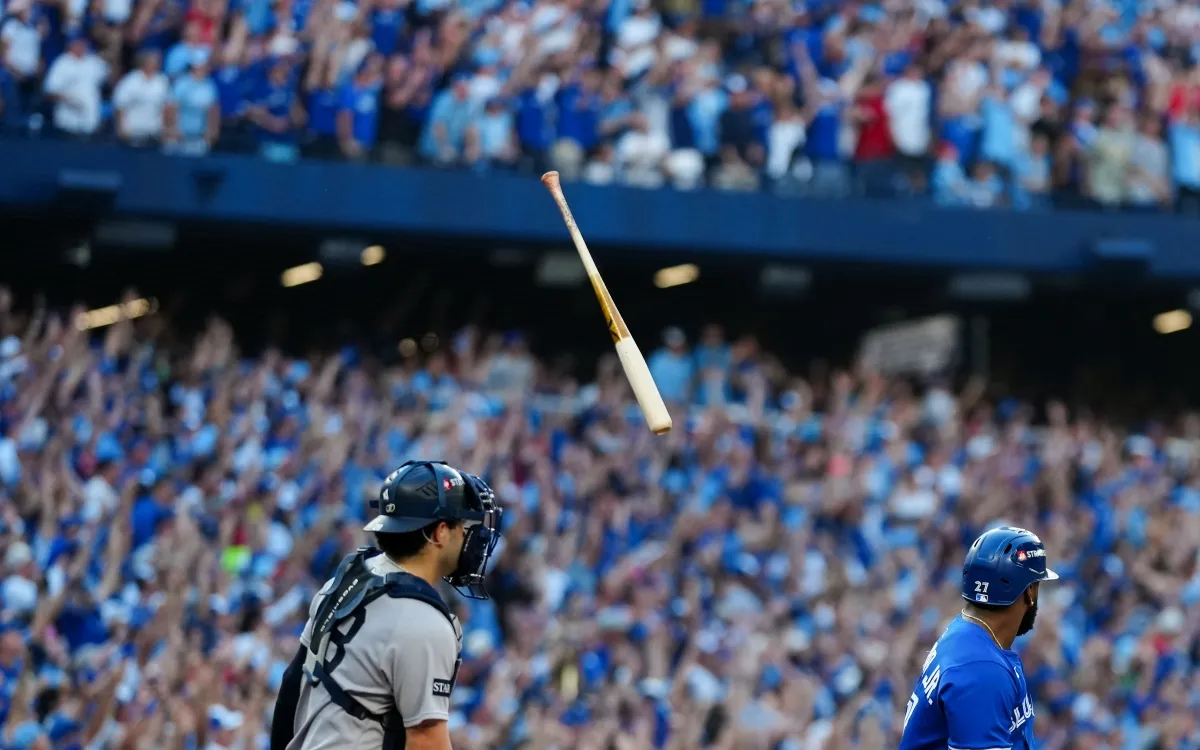
This postseason is shaping up to be a showcase for rookie pitchers, and the spotlight is shining brightly on emerging talents like Trey Yesavage. After an impressive performance by Cam Schlittler against the Red Sox, the New York Yankees experienced a taste of their own medicine on Sunday night when they faced Yesavage, a remarkable 22-year-old pitcher. In only his fourth career start, Yesavage managed to outduel seasoned pitcher Max Fried, making headlines across the league.
Trey Yesavage's journey to the major leagues has been nothing short of extraordinary. He began the year in Single-A, where he made seven appearances before quickly getting promoted to High-A and then Double-A, where he made eight appearances. Just before celebrating his 22nd birthday, Yesavage climbed the ranks to Triple-A, where he made six appearances. His rapid ascent culminated in him becoming the Toronto Blue Jays' Game 2 starter in the AL Divisional Series, showcasing how a busy year can lead to significant opportunities.
Yesavage's promotion to the majors reflects a bold strategy employed by the Blue Jays. With fewer intra-division games this season, divisional rivals become accustomed to each other's starting pitchers and their unique styles. By throwing a fresh face like Yesavage into the mix, the Blue Jays aimed to challenge the Yankees' offense and force them to adjust to a new pitching style, especially given that the Yankees have the weakest starting rotation among all playoff teams.
What sets Trey Yesavage apart is his remarkable arm angle of 63 degrees, one of the steepest in baseball. Standing at an impressive 6-foot-4, he boasts one of the highest release points in the game, giving him a unique advantage. His unusual delivery enhances all his pitches, particularly his devastating splitter, which can be described as 'coming from the sky.' Yankees batters had to face the harsh reality of Yesavage’s splitter, which proved to be a key factor in his playoff debut.
In front of his family, Yesavage delivered a stunning performance, throwing a no-hitter through 5.1 innings and striking out 11 Yankees batters. Notably, eight of those strikeouts were attributed to his lethal splitter. His ability to maintain focus was evident when he struck out Trent Grisham immediately after the batter called for a timeout, showcasing his poise and determination on the mound.
As Yesavage exited the game to a standing ovation in the top of the sixth, the Yankees found themselves hitless, while the Blue Jays had already scored an astounding 12 runs. This led to the inevitable 'LOL Yankees' moment of the night, as the Yankees, despite their ace on the mound, fell victim to another high-scoring game. The fourth inning proved disastrous for the Yankees when Max Fried was pulled from the game, leading to a grand slam by Vladimir Guerrero Jr.—the first postseason grand slam in Blue Jays history.
The Blue Jays' offensive onslaught raised questions about the Yankees' pitching strategy. The immediate aftermath of Yesavage's departure saw the Yankees' bullpen struggle, with pitcher Luke Weaver recording a single out, which inflated his postseason ERA to a staggering 135.00. This performance led to some light-hearted jabs, with fans dubbing the team as the 'Stankees.'
While the Yankees' struggles were evident, it's essential to recognize the prowess of the Blue Jays' offense. After clinching the AL East pennant with a dominant victory over the Tampa Bay Rays, the Blue Jays continued their momentum into the postseason. Despite having a bye week, they picked up right where they left off, demonstrating their capability to capitalize on weaknesses in their opponents.
This postseason is not just about the established stars; it's also a platform for rookie pitchers like Trey Yesavage to shine. As the Yankees continue to grapple with their pitching woes, the emergence of talented rookies adds an exciting dimension to the playoffs. With each game, the narrative evolves, setting the stage for thrilling matchups ahead.